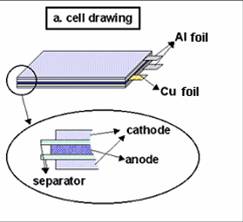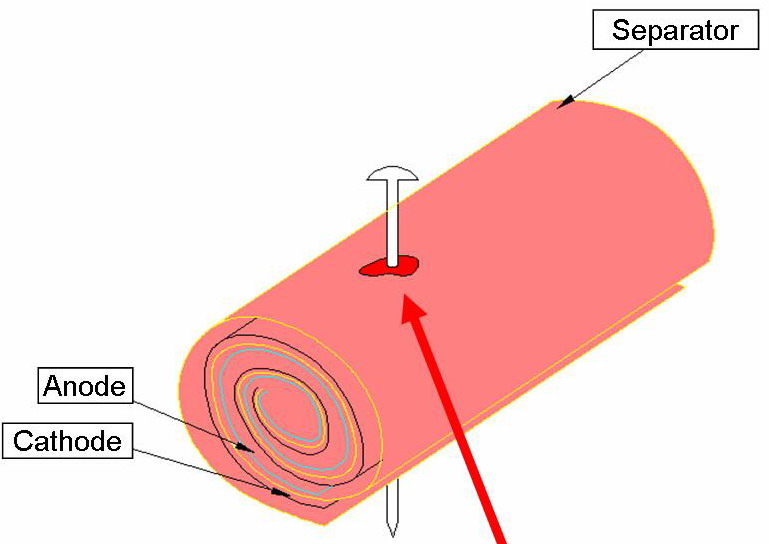| Structure of Stacking Li-Polymer Battery |
 |
|
| |
| |
| |
| Structure of the Stacking battery |
 |
Stacking:
A stacking-type lithium-ion
polymer battery comprises:
cathode; anode; separator;
and electrolyte.
Electrodes (either cathode or
anode) are stacked on top of
each other with the separator
(an insulating porous sheet)
sandwiched in the middle,
then packed by Al/plastic laminated material.
This battery just likes many
small batteries in parallel arrangement within
a soft container. |
|
| |
| |
| |
| Structure of the wilding battery |
 |
Winding:
A winding-type lithium-ion
polymer battery comprises: one cathode;
one anode; one separator; and electrolyte.
The cathode and anode ( each is in a one long
piece form)are wound together with the
separator (also in a long one piece form).
They are enclosed in either an Al /plastic
laminate or metal container. |
|
| |
| |
| |
| Stacking-type Battery |
 |
Analysis£º
Stacking battery likes
several small batteries are
arranged in parallel within.
Each pair of electrodes are
independent. When the nail
punctures the battery, some
of them are damaged but
some of them might not.
That’s why we still can see
the voltage is not 0. |
| |
Potential difference for each pair of electrode is 4.2V. When the nail punctures each pair of electrode, it will cause the different damage and short circuit for each pair of electrode but some of them are not. That’s why the voltage will not be 0 in a short time¡£ |
|
|
|
| |
| |
| |
| Winding-type battery |
 |
Analysis£º
The wilding-type battery is
an anode , a cathode and a
separator to wind together.
When the nail puncture the battery, it will cause the short
circuit and voltage become 0.
The winding type battery only
has one anode and cathode.
When one nail punctures both
of them, it will be very similar
several nails to puncture the
stacking type battery. So it will
cause the temperature to
increase and voltage becomes
0. |
| |
The winding –type:
When the nail puncture the battery,
it will cause the short circuit and voltage will be 0 . |
|
|
|
| |
| |